Combat engineer
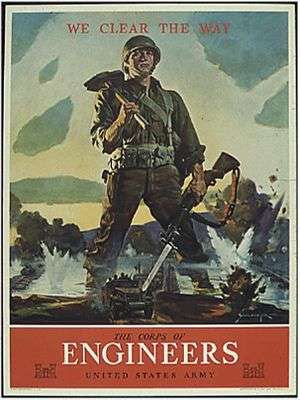

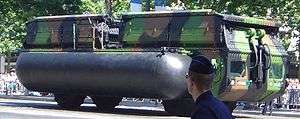
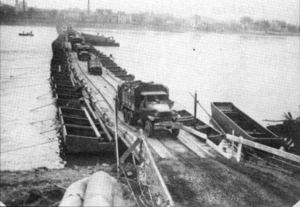
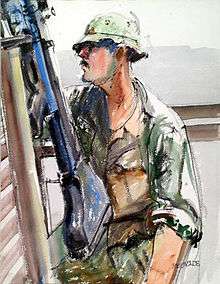
A combat engineer (also called field engineer, pioneer or sapper in many armies) is a soldier specialist who performs a variety of construction and demolition tasks under combat conditions.
The combat engineer's goals involve facilitating movement and support of friendly forces while impeding those of the enemy. Combat engineers build, repair and maintain buildings, roads and power supplies. They employ explosives for construction and demolition projects, and clear minefields using specialized vehicles. Such tasks typically include constructing and breaching trenches, tank traps and other fortifications, bunker construction, bridge and road construction or destruction, laying or clearing land mines, and other physical work in the battlefield.
Terminology
A general combat engineer is often called a pioneer or sapper, terms derived respectively from the French and British armies. In some armies, pioneer and sapper indicate specific military ranks and levels of combat engineers, who work under fire in all seasons, may be allocated to different corps, as they were in the former Soviet Army, or they may be organized in the same corps. Geomatics (surveying and cartography) is another area of military engineering but is often performed by the combat engineers of some nations and in other cases is a separate responsibility, as was formerly the case in the Australian Army. While the officers of a combat engineering unit may be professionally certified civil or mechanical engineers, the non-commissioned members are generally not.
- Sapper:
- In the U.S., British, Indian, Canadian, Australian, and New Zealand armies, is a soldier who has specialized combat engineer training.
- In the Israeli Defence Forces, Sapper 06 ( פלס 06 ) is a military profession code denoting a combat engineer who has graduated from basic general engineering training.
- In the Canadian Army, is a term for soldiers that have completed the basic Combat Engineer training.[1]
- In the Portuguese Army, a sapador de engenharia (engineering sapper) is a soldier of the engineering branch that has specialized combat engineer training. A sapador de infantaria (infantry sapper) is a soldier of the infantry branch that has a similar training and that usually serves in the combat support sapper platoon of an infantry battalion.
- Pioneer:
- In the Finnish army, pioneeri is the private equivalent rank in the army for a soldier who has completed the basic combat engineering training. Naval engineers retain the rank matruusi but bear the pioneeri insignia on their sleeves.
- The German Bundeswehr uses the term "Pionier" for their combat engineers and other specialized units, who are associated with Special Forces to clear obstacles and perform engineering duties. Also the combat engineers in the Austro-Hungarien k.u.k. Forces were called "Pioniere".
- Assault pioneer:
- In the British, Canadian and Australian armies, an assault pioneer is an infantry soldier with some limited combat engineer training in clearing obstacles during assaults and light engineering duties. Until recently, assault pioneers were responsible for the operation of flamethrowers.
- Field engineer:
- is a term used (or formerly used) in many Commonwealth armies. In modern usage, it is often synonymous with "combat engineer". However, the term originally identified those military engineers who supported an army operating in the field as opposed to garrison engineers who built and supported permanent fix bases. In its original usage, "field engineering" would have been inclusive of but broader than "combat engineering."
- Miner
- Pontonier
Practices and techniques
Combat engineers are force multipliers and enhance the survival of other troops through the use and practice of camouflage, reconnaissance, communications and other services. These include the construction of roads, bridges, field fortifications, obstacles and the construction and running of water points . In these roles, combat engineers use a wide variety of hand and power tools. They are also responsible for construction rigging, the use of explosives, and the carrying out of demolitions, obstacle clearance, and obstacle construction, assault of fortifications, use of assault boats in water obstacle crossings, helipad construction, general construction, route reconnaissance and road reconnaissance, and erecting communication installations. Combat engineers build and run water distribution points, carrying out water filtration, and NBC decontamination when necessary, and storage prior to distribution.
All these role activities and technologies are divided into several areas of combat engineering:
- Mobility
Improving the ability of one's own force to move around the battlefield. Combat engineers typically support this role through reduction of enemy obstacles which include point and row minefields, anti-tank ditches, wire obstacles, concrete and metal anti-vehicle barriers, and Improvised Explosive Devices (IED) and wall and door breaching in urban terrain. Mechanized combat engineer units also have armored vehicles capable of laying short bridges for limited gap-crossing.
- Clearing terrain obstacles
- Overcoming trenches and ditches
- Opening routes for armored fighting vehicles
- Constructing roads and bridges
- Route clearance
- Countermobility
Building obstacles to prevent the enemy from moving around the battlefield. Destroying bridges, blocking roads, creating airstrips, digging trenches, etc. Can also include planting land mines and anti-handling devices when authorized and directed to do so.
When the defender must retreat it is often desirable to destroy anything that may be of use to the enemy, particularly bridges, as their destruction can slow the advance of the attackers. The retreating forces may also leave booby traps for enemy soldiers, even though these often wreak their havoc upon non-combatant civilians.
- Planting land mines
- Digging trenches and ditches
- Demolishing roads and bridges
- Explosive material handling
The placement of land mines to create minefields and their maintenance and removal.
- Clearing fields of land mines
- Demolition
- Assault
- Opening routes during assault
- Demolishing enemy structures (using bulldozers or explosive charges).
- Defense structures
Building structures which enable one's own soldiers to survive on the battlefield. Examples include trenches, bunkers, shelters, and armored vehicle fighting positions.
Defensive fortifications are designed to prevent intrusion into the inner works by infantry. For minor defensive locations these may only consist of simple walls and ditches. The design principle is to slow down the advance of attackers to where they can be destroyed by defenders from sheltered positions. Most large fortifications are not a single structure but rather a concentric series of fortifications of increasing strength.
- Building fortifications
- Building outposts
- Building fences
- Defense against NBC weapon threats
Equipment and vehicles
Combat engineers employ a wide range of transportation vehicles and equipment, and uses weapons unique to the engineers, including those used in land mine warfare.
- Equipment used by combat engineers

Basic combat engineering tools include safe use of: driving tools and chopping tools (hammers, mauls, sledges, screwdriver, and bits); cutting tools and smoothing tools (saws, chisels, planes, files and rasps, brush-cutting tools, miscellaneous cutting tools); drilling tools, boring tools, and countersinking tools; measuring tools, leveling tools and layout tools (rules, tapes, marking tools, levels, plumb bobs, squares); gripping tools, prying tools and twisting tools (pliers, wrenches, bars); holding tools, raising tools and grinding tools (vises, clamps, jacks, grinders, and oilstones); timber handling tools and climbing tools; digging tools (shovels, posthole diggers, picks, and mattocks); portable power tools and trailer-mounted tools (electric tool trailer and generator, portable power tools); miscellaneous tools.
- Vehicles
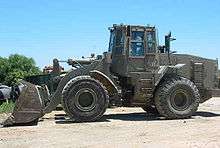

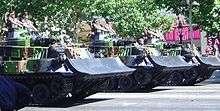
- Obstacle breaching
For obstacle breaching, including minefields, the combat engineers use a variety of vehicles, explosive devices and plastic explosives including:
- Minefield breaching devices
- Dozer blade
- Mine rollers
- Bangalore torpedo
- Antipersonnel Obstacle Breaching System
- Mine-clearing line charge (MICLIC)
- Bomb disposal robots
- Explosives, mines and bombs
- Field-deployable bridges, for example, French EFA[2] and Bailey bridge.
Combat engineering corps

Combat engineers are a key role in all armed forces of the world, and invariably found either closely integrated into the force structure, or even into the combat units of the national troops. In many countries, combat engineers are members of broader military engineering corps or branches. However, some nations have distinct combat engineering corps or branches which are separate from other types of military engineers. The Danish military engineering corps is almost entirely organized into one regiment of combat engineers, simply named Ingeniørregimentet ("The Engineering Regiment"). During the War in Afghanistan and the 2003–2011 Iraq War the US Army tasked its combat engineers with route clearance missions designed to counter rising threats of IEDs. To increase the effectiveness of these units EOD and mechanic teams are typically embedded with the combat engineer platoon. Due to rising IED threats US Army sends some combat engineers rank specialist or higher to complete Explosive Ordnance Clearance Agent training to familiarize themselves with types of unexploded ordnance.[3]
Historical publications
The Basic Field Manual, Engineer Soldier's Handbook, 2 June 1943 (FM 21-105) was written to provide guidance to a new combat engineer in the United States.[4]
See also
Notes
- ↑ "Sapeur / Sapeuse de combat". Forces.Ca. Retrieved 2013-01-20.
- ↑ French EFA Archived 13 December 2004 at the Wayback Machine.
- ↑ "Explosive Ordnance Clearance Agent" (PDF). US Army.
- ↑ Engineer soldier's handbook